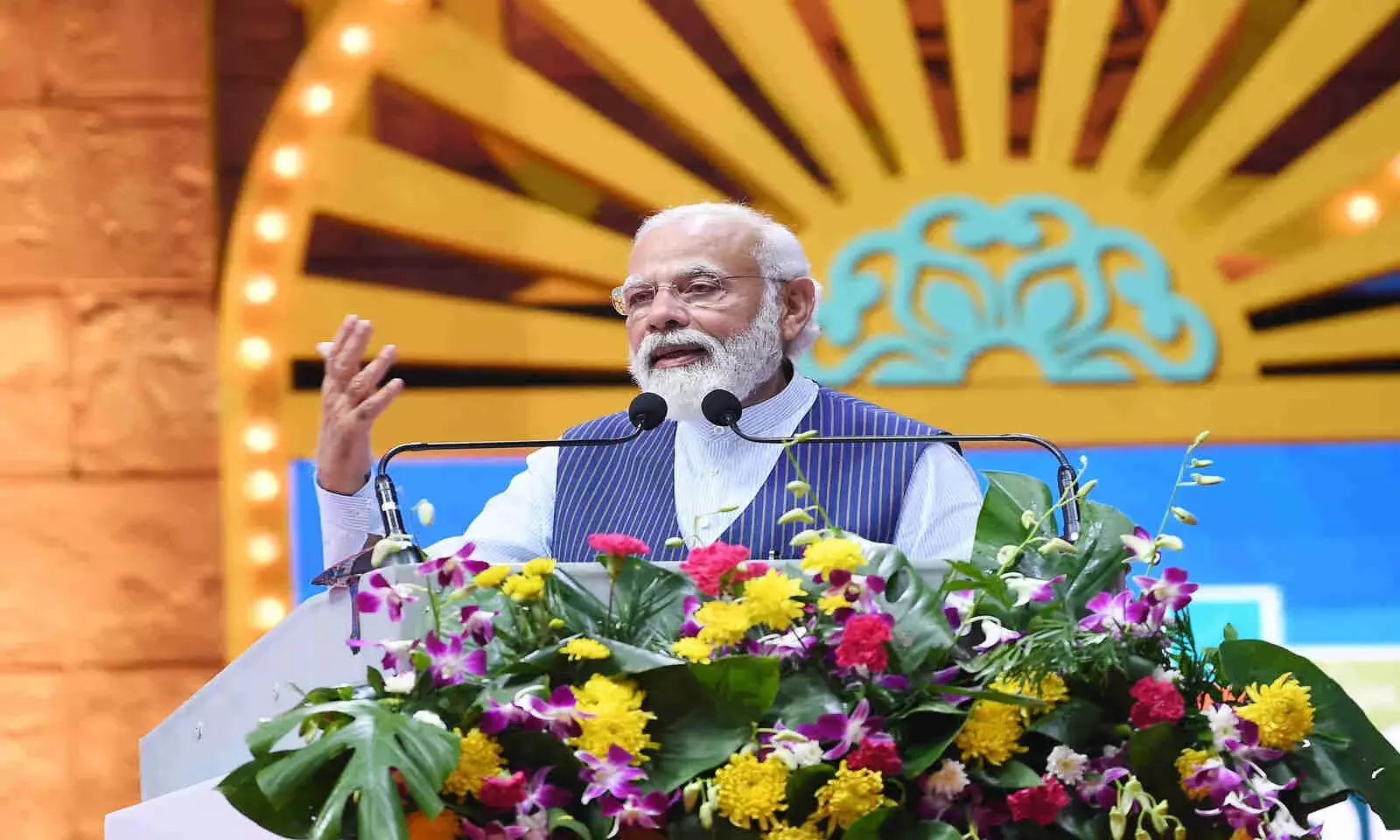Modi Claims Portuguese Colonised Goa During Mughal Rule in India, But Records Show Otherwise
PM Modi claimed that Goa came under Portuguese rule after the Mughals had conquered most of India, but official records and historians say it’s the other way around

Image: PIB Photos
Prime Minister Narendra Modi attended Goa Liberation Day celebration on December 19, 2021 and while addressing the gathering there, he said Goa came under Portuguese domination around the time when most of the rest of India was under Mughals.
"The Portuguese came to rule in Goa when other parts of the country were ruled by the Mughals. After that the country witnessed many political storms and changes in power, but despite all the changes in politics, Goa did not forget its Indian identity, nor did India forget Goa," said Modi (timestamp 9:20 onwards in the video below).
FactChecker looked at official historical records and spoke to a historian to verify the Prime Minister's claim and found that the Mughal empire was established at least over a decade after the Portuguese colonised Goa.
In 1510, the Portuguese had defeated the ruling Bijapur kings with the help of a local ally called Timayya and set up a permanent settlement in Velha Goa (or Old Goa), according to the website of Goa's Department of Information and Publicity.
Professor Salma Ahmed Farooqui of Centre for Deccan Studies at Maulana Azad National Urdu University, Hyderabad, said the Mughal Empire was formed in India in 1526 and explained the timeline of Portuguese' arrival in India. She said, in 1487, Portuguese traveller Bartholomew Diaz came to the Cape of Good Hope and he reached Africa and that's how the trade route started as Europeans came to know there was a feasible route to India around the southern tip of Africa.
"In 1498, Portuguese explorer Vasco da Gama began his voyage and from Cape of Good Hope, he came to the Malabar Coast. He then met King Zamorin of Calicut. In 1500, another Portuguese explorer Pedro Álvares Cabral arrived in Kozhikode with a big naval fleet. Till now they had not started colonisation," said Farooqui.
"Zamorin then allowed them to set up a Portuguese spices factory at Malabar coast. Then, the Portuguese seized the fort of Coonoor and after this they established their own trading houses in Kozhikode, Kochi and Coonoor by 1503. From 1505, their viceroys Francisco de Almeida and then Afonso de Albuquerque came to India and started fortifying their positions," the historian explained while adding that around this time the Portuguese rule began.
The Mughal dynasty, which was established under Zahiruddin Muhammad Babur, did not come into power until 1526, according to a textbook on Medieval India published on the website of National Institute of Open Schooling, an autonomous institution under the Union Ministry of Education.
Babur first made his decisive moves towards Hindustan or India in 1517, after receiving invitations from the likes of Rana Sanga, who was the Rajput king of Mewar, and Daulat Khan Lodi — both of whom had grievances against Ibrahim Lodi, who was the son of the late Sikandar Lodi and his successor in the Delhi Sultanate, according to the Medieval India textbook.
It's mentioned in the textbook that Babur's first conquest in India was of a territory in Punjab, called Bhira (or Bhera) in 1519, which is still nine years after the Portuguese had established their rule in Goa. Babur was able to establish a 'firm ground to consolidate his conquests' after being victorious at Panipat against the forces of Ibrahim Lodi in 1526, read the book.
The chronology of the initiation of Portuguese rule, which was established in 1510, is also listed out in Goa-Kanara Portuguese Relations 1498-1763, a book written by BS Shastry and edited by Charles J Borges, who was the Director of the Xavier Center of Historical Research in Alto Porvorim, Goa.
FactChecker tried contacting the Prime Minister's Office via calls and email, but had not received a response by the time of publishing.
(With inputs from Isha Bajpai)


